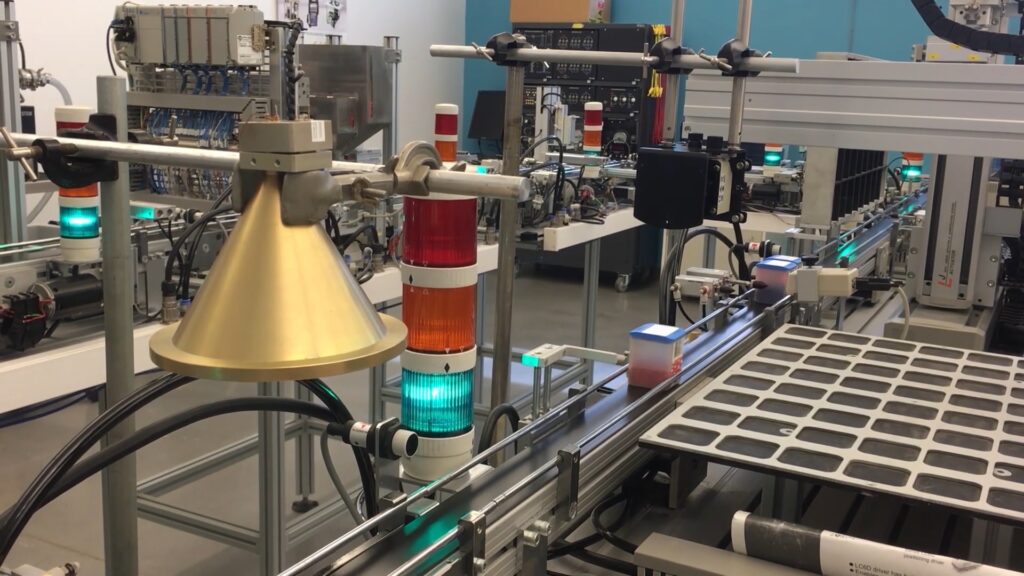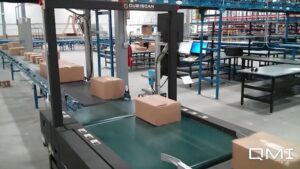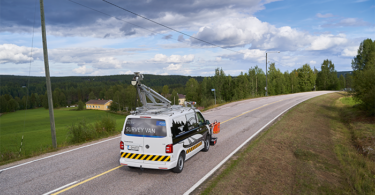DeepSee system from TiM$10K Challenge is estimated to save consumer goods manufacturers $200k every day
The Food and Drug Administration (FDA) recommends packaging facilities inspect up to 29 cans out of 84,0001 produced. The most common process currently is to look at cans at the end of an assembly line or divert them from the line during production. However, this process is very time intensive and not very efficient. But a team of engineering students at Worcester Polytechnic Institute (WPI) sought to find a better solution for quality control checks with DeepSee, a machine vision program, that they submitted for the 2019- 2020 TiM$10K Challenge with SICK, Inc.
At any given facility, millions of products are produced and shipped out. For a company that sells canned goods, each can must be correctly assembled and packaged. However, the process isn’t perfect – issues range from food spoilage to cans not being assembled properly. Random sampling is often implemented to evaluate products for defects, but it is limited in scope.

If a machine is calibrated incorrectly, for example, and products are being created improperly, random sampling does not notify management until the end of the production process. By then, hundreds of thousands (if not millions) could be lost in improper product creation, as well as lost time spent remedying the problem. DeepSee quality control checks could sidestep this problem entirely.
Created for SICK’s 2020 TiM$10K Challenge, DeepSee was developed by Jacob Bouchard, Frederick Miller, Patrick O’Mullan, and Vuong Truong, who acted as the team’s chief of research and development. Douglas Petkie, Professor and Department Head of the WPI Physics Department, advised the team.
So, what is the TiM$10K Challenge? In this challenge, SICK reached out to universities across the nation that were looking to support innovation and student achievement in automation and technology. Participating teams were supplied with a SICK 270° LiDAR, a TiM, and accessories. They were challenged to solve a problem, create a solution, and bring a new application that utilizes the SICK scanner in any industry.
How DeepSee Works
Two coupled sensors are mounted directly over a packaging line. The is the SICK TiM 781 2D LiDAR, which is synched to the speed of the line to allow it to provide high-resolution 3D imaging. The second sensor is down the line: a 100GHz amplitude and frequency modulated imaging system (THz system). Leveling up the ability to perform even more enhanced quality control checks.
When the LiDAR scanner takes an image, it is sent into a machine vision program which identifies packages. The packages’ coordinates are then sent to the imaging system to limit the scan field. Because the THz system is able to penetrate dielectrics, such as plastic and cardboard, it can create images of the packages’ contents using electromagnetic waves. These THz images can be fed back into the machine vision program (This teaches DeepSee to recognize defects from correct packages, allowing for the removal of defects from the line with certainty.
Placing DeepSee on an assembly line allows it to perform nondestructive evaluation of any manufactured goods in a facility, which saves time and money because resources don’t have to be diverted to moving random samples to an inspection location. Nondestructive evaluation is also greener, because packaging is not damaged or wasted like it would be in random sampling.
“The system itself consumes very little power,” Bouchard mentioned. “The LiDAR draws approximately 4 watts, the current THz system draws a maximum of 300 watts (about five lightbulbs), but this can be replaced by a more compact and lower power source. The computing requirements are quite low which enables DeepSee to be easily integrated into existing systems.”
 Developing DeepSee
Developing DeepSee
The biggest problems the team faced during development were computer issues. They lost a lot of data during development, which led to team members staying on top of saving their work. O’Mullan explained, “People on the team were dedicated to creating good documentation and backing everything up. That saved us multiple times because there were computer issues which almost made us lose a lot of progress.”
What was interesting about the DeepSee team in particular was its variety: It included two PhD students (Bouchard and Truong), a junior (Miller), and a sophomore (O’Mullan). While the PhD students studied physics, the undergrads were studying computer science. This diversity of thought was championed by Truong, who said that recruiting from different fields was what allowed the team to work to so well. “It allowed us to expand and come up with different ideas. We could see things working from different perspectives.” He said.
 Register for the 2020-2021 TiM$10K Challenge
Register for the 2020-2021 TiM$10K Challenge
SICK is now accepting entries for the TiM$10K Challenge for the 2020-2021 school year! Student teams can register online by September 14, 2020. Student teams are encouraged to use their creativity and technical knowledge to incorporate the SICK LiDAR for any industry in any application. Advisors/professors are allowed to guide the student teams as required.
This contest was supported by PMMI Foundation’s U Skills Fund. PMMI Foundation works to grow awareness of careers in packaging and processing, providing assistance to schools and programs that develop students to excel in the industry.





